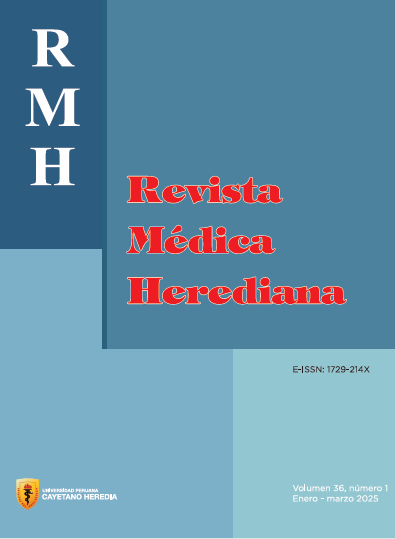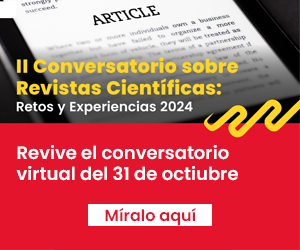Dermatological diseases associated with exposure to petroleum: a narrative literature review
DOI:
https://doi.org/10.20453/rmh.v36i2.5848Keywords:
petroleum pollution, petroleum, oil and gas industry, skin diseasesAbstract
Few studies have explored the dermatological effects of exposure to petroleum. This narrative review aimed to identify the most common skin diseases related to this exposure. A literature search from 2019 to 2024 was performed in PubMed, Scopus, SciELO, and LILACS in both English and Spanish. Fifty-two publications were included. Petroleum mainly consists of hydrocarbons; polycyclic aromatic hydrocarbons induce skin effects through a cycle of oxidative stress, inflammation, and skin barrier dysfunction. Frequently reported conditions included acne, cancer, dermatitis, burns, pigment changes, and unspecified disorders. Nail and hair issues were also noted. Exposure to petroleum induces distinct dermatological pathologies and worsens existing conditions. More epidemiological and experimental studies are needed to fully understand the underlying mechanisms.
Downloads
References
Abolhasani R, Araghi F, Tabary M, Aryannejad A, Mashinchi B, Robati RM. The impact of air pollution on skin and related disorders: A comprehensive review. Dermatol Ther. 2021;34(2):e14840. doi: 10.1111/dth.14840.
Roberts W. Air pollution and skin disorders. Int J Womens Dermatol. 2020;7(1):91-7. doi: 10.1016/j.ijwd.2020.11.001.
Abdel-Shafy HI, Mansour MSM. A review on polycyclic aromatic hydrocarbons: Source, environmental impact, effect on human health and remediation. Egypt J Pet. 2016;25(1):107-23. doi: 10.1016/j.ejpe.2015.03.011.
Jin H, Lin Z, Pang T, Wu J, Zhao C, Zhang Y, et al. Effects and mechanisms of polycyclic aromatic hydrocarbons in inflammatory skin diseases. Sci Total Environ. 2024; 925:171492. doi: 10.1016/j.scitotenv.2024.171492.
Dec M, Arasiewicz H. Aryl hydrocarbon receptor role in chronic inflammatory skin diseases: a narrative review. Postepy Dermatol Alergol. 2024;41(1):9-19. doi: 10.5114/ada.2023.135617.
Lin L, Dai Y, Xia Y. An overview of aryl hydrocarbon receptor ligands in the Last two decades (2002–2022): A medicinal chemistry perspective. Eur J Med Chem. 2022; 244:114845. doi: 10.1016/j.ejmech.2022.114845.
Hopf NB, Spring P, Hirt-Burri N, Jimenez S, Sutter B, Vernez D, et al. Polycyclic aromatic hydrocarbons (PAHs) skin permeation rates change with simultaneous exposures to solar ultraviolet radiation (UV-S). Toxicol Lett. 2018; 287:122-30. doi: 10.1016/j.toxlet.2018.01.024.
Selley RC, Sonnenberg SA. The Physical and Chemical Properties of Petroleum. En: Selley RC, Sonnenberg SA, editores. Elements of Petroleum Geology. 4ta Edición. Boston, EE.UU Academic Press; 2022. p. 15-42.
Chaudhuri UR. Crude Petroleum Oil. En: Chaudhuri UR, editor. Fundamentals of Petroleum and Petrochemical Engineering. Boca Raton, EE.UU: CRC Press, Taylor and Francis Group. 2011. p. 24.
Coutinho DM, França D, Vanini G, Gomes AO, Azevedo DA. Understanding the molecular composition of petroleum and its distillation cuts. Fuel. 2022;311:122594. doi: 10.1016/j.fuel.2021.122594.
Vandana, Priyadarshanee M, Mahto U, Das S. Mechanism of toxicity and adverse health effects of environmental pollutants. En: Das S, Dash HR, editores. Microbial Biodegradation and Bioremediation. 2da Edición. Chennai, India: Elsevier Inc.2022. p. 33-53. doi: 10.1016/C2020-0-01871-2.
Patel AB, Shaikh S, Jain KR, Desai C, Madamwar D. Polycyclic Aromatic Hydrocarbons: Sources, Toxicity, and Remediation Approaches. Front Microbiol. 2020; 11:562813. doi: 10.3389/fmicb.2020.562813.
Hussar E, Richards S, Lin ZQ, Dixon RP, Johnson KA. Human Health Risk Assessment of 16 Priority Polycyclic Aromatic Hydrocarbons in Soils of Chattanooga, Tennessee, USA. Water Air Soil Pollut. 2012;223(9):5535-48. doi: 10.1007/s11270-012-1265-7.
Leung MHY, Tong X, Bastien P, Guinot F, Tenenhaus A, Appenzeller BMR, et al. Changes of the human skin microbiota upon chronic exposure to polycyclic aromatic hydrocarbon pollutants. Microbiome. 2020;8(1):1-17. doi: 10.1186/s40168-020-00874-1.
Nwankwo C, Arewa A, Theophilus S, Esenowo V. Analysis of accidents caused by human factors in the oil and gas industry using the HFACS-OGI framework. Int J Occup Saf Ergon. 2022;28(3):1642-54. doi: 10.1080/10803548.2021.1916238.
Parasram V. Severe Work-Related Injuries in the Oil and Gas Extraction Industry — 32 Federal Occupational Safety and Health Administration Jurisdictions, United States, January 2015–July 2022. Morb Mortal Wkly Rep. 2024; 73:104-9. doi: 10.15585/mmwr.mm7305a3.
Savage N, Doherty Z, Singer Y, Menezes H, Cleland H, Goldie SJ. A Review of Petrol Burns in Australia and New Zealand. J Burn Care Res. 2023;44(5):1162-8. doi: 10.1093/jbcr/irad008.
Sreedharan S, Menezes H, Cleland H, Goldie SJ. Petrol-related burn injuries presenting to the Victorian Adult Burns Service. Australas J Plast Surg. 2019;2(2):45-9. doi: 10.34239/ajops.v2n2.153.
Lin TC, Wu RX, Chiu CC, Yang YS, Lee Y, Lin JC, et al. The clinical and microbiological characteristics of infections in burn patients from the Formosa Fun Coast Dust Explosion. J Microbiol Immunol Infect. 2018;51(2):267-77. doi: 10.1016/j.jmii.2016.08.019.
Fadeyibi I, Jewo P, Opoola P, Babalola O, Ugburo A, Ademiluyi S. Burns and fire disasters from leaking petroleum pipes in Lagos, Nigeria: An 8-year experience. Burns. 2011;37(1):145-52. doi: 10.1016/j.burns.2010.06.012.
Kelly D, Rizzo J, Yun H, Blyth D. Microbiology and clinical characteristics of industrial oil burns. Burns. 2020;46(3):711-7. doi: 10.1016/j.burns.2019.10.007.
Carlson LC, Rogers TT, Kamara TB, Rybarczyk MM, Leow JJ, Kirsch TD, et al. Petroleum pipeline explosions in sub-Saharan Africa: A comprehensive systematic review of the academic and lay literature. Burns. 2015;41(3):497-501. doi: 10.1016/j.burns.2014.08.013.
Fabbrocini G, Kaya G, Silverio PC, De Vita V, Kaya A, Fontao F, et al. Aryl Hydrocarbon Receptor Activation in Acne Vulgaris Skin: A Case Series from the Region of Naples, Italy. Dermatology. 2015;231(4):334-8. doi: 10.1159/000439402.
Napolitano M, Fabbrocini G, Martora F, Picone V, Morelli P, Cataldo P. Role of Aryl Hydrocarbon Receptor Activation in Inflammatory Chronic Skin Diseases. Cells. 2021;10(12):3559-3559. doi: 10.3390/cells10123559.
Demir B, Çiçek D. Occupational Acne. En: Acne and Acneiform Eruptions de Kartal SP & Gönül M. IntechOpen; 2017. doi: 10.5772/64905.
Karpova A, Filimonov S, Semenikhin V. Industrial ecology and skin diseases. Russ J Occup Health Ind Ecol. 2022;62(11):781-4. doi: 10.31089/1026-9428-2020-60-6-387-391.
Kemp J, Luckett-Chastain LR, Calhoun KN, Frempah B, Schartz TR, Harty LE, et al. Evaluation of skin irritation following weathered crude oil exposure in two mouse strains. Toxicol Ind Health. 2020;36(10):788-99. doi: 10.1177/0748233720944354.
Tang KT, Chen PA, Lee MR, Lee MF, Chen YH. The relationship between exposure to polycyclic aromatic hydrocarbons and adult atopic dermatitis. Asian Pac J Allergy Immunol. 2020;7. doi: 10.12932/AP-210720-0926.
Wang C, Tsai JD, Wan L, Lin CL. Association of Exposure to Hydrocarbons Air Pollution with Incidence of Atopic Dermatitis in Children. Ital J Pediatr. 2021;47(1):202. doi: 10.1186/s13052-021-01157-7.
Hu Y, Zhang Y. Unbalanced Aryl Hydrocarbon Receptor Expression in Peripheral and Lesional T Cell Subsets of Atopic Dermatitis. Clin Cosmet Investig Dermatol. 2023;(16):3661-71. doi: 10.2147/CCID.S430915.
Contestable JJ. Jet Fuel–Associated Occupational Contact Dermatitis. Mil Med. 2017;182(3):e1870-3. doi: 10.7205/MILMED-D-16-00217.
Milam EC, Nassau S, Banta E, Fonacier L, Cohen DE. Occupational Contact Dermatitis: An Update. J Allergy Clin Immunol Pract. 2020;8(10):3283-93. doi: 10.1016/j.jaip.2020.08.004.
Furue M, Tsuji G. Chloracne and Hyperpigmentation Caused by Exposure to Hazardous Aryl Hydrocarbon Receptor Ligands. Int J Environ Res Public Health. 2019;16(23):4864. doi: 10.3390/ijerph16234864.
Chan TK, Bramono D, Bourokba N, Krishna V, Wang ST, Neo BH, et al. Polycyclic aromatic hydrocarbons regulate the pigmentation pathway and induce DNA damage responses in keratinocytes, a process driven by systemic immunity. J Dermatol Sci. 2021;104(2):83-94. doi: 10.1016/j.jdermsci.2021.09.003.
Niu S, Colosio C, Carugno M, Adisesh A. Diagnostic and exposure criteria for occupational diseases. Guidance notes for diagnosis and prevention of the diseases in the ILO List of Occupational Diseases (revised 2010). Ginebra, Suiza: International Labour Organization (ILO); 2022. p. 8-327.
Onyije FM, Hosseini B, Togawa K, Schüz J, Olsson A. Cancer Incidence and Mortality among Petroleum Industry Workers and Residents Living in Oil Producing Communities: A Systematic Review and Meta-Analysis. Int J Environ Res Public Health. 2021;18(8):4343. doi: 10.3390/ijerph18084343.
Misra N, Marrot L. In Vitro Methods to Simulate Pollution and Photo-Pollution Exposure in Human Skin Epidermis. Methods Mol Biol. 2020;2150:227-41. doi: 10.1007/7651_2020_279.
Liu FC, Grimsrud TK, Veierød MB, Robsahm TE, Ghiasvand R, Babigumira R, et al. Ultraviolet radiation and risk of cutaneous melanoma and squamous cell carcinoma in males and females in the Norwegian Offshore Petroleum Workers cohort. Am J Ind Med. 2021;64(6):496-510. doi: 10.1002/ajim.23240.
Kriech AJ, Schreiner CA, Osborn LV, Riley A. Assessing cancer hazards of bitumen emissions - a case study for complex petroleum substances. Crit Rev Toxicol. 2018;48(2):121-42. doi: 10.1080/10408444.2017.1391170.
Hidaka T, Fujimura T, Aiba S. Aryl Hydrocarbon Receptor Modulates Carcinogenesis and Maintenance of Skin Cancers. Front Med. 2019;6:194-194. doi: 10.3389/fmed.2019.00194.
Khatatbeh M, Alzoubi K, Khabour O, Al-Delaimy W. Adverse Health Impacts of Living Near an Oil Refinery in Jordan. Env Health Insights. 2020;14:1178630220985794. doi: 10.1177/1178630220985794.
D’Andrea MA, Reddy GK. Crude Oil Spill Exposure and Human Health Risks. J Occup Environ Med. 2014;56(10):1029-41. doi: 10.1097/JOM.0000000000000217.
Orisakwe OE. Crude oil and public health issues in Niger Delta, Nigeria: Much ado about the inevitable. Environ Res. 2021;194:110725. doi: 10.1016/j.envres.2021.110725.
Ferguson A, Solo-Gabriele H, Mena K. Assessment for oil spill chemicals: Current knowledge, data gaps, and uncertainties addressing human physical health risk. Mar Pollut Bull. 2020;150:110746. doi: 10.1016/j.marpolbul.2019.110746.
De Vecchi R, da Silveira Carvalho Ripper J, Roy D, Breton L, Germano Marciano A, Bernardo de Souza PM, et al. Using wearable devices for assessing the impacts of hair exposome in Brazil. Sci Rep. 2019;9(1):13357. doi: 10.1038/s41598-019-49902-7.
Naudin G, Bastien P, Mezzache S, Trehu E, Bourokba N, Appenzeller BMR, et al. Human pollution exposure correlates with accelerated ultrastructural degradation of hair fibers. Proc Natl Acad Sci U A. 2019;116(37):18410-5. doi: 10.1073/pnas.1904082116.
Umarova G, Batyrova G, Tlegenova Z, Kononets V, Balmagambetova S, Umarov Y, et al. Essential Trace Elements in Scalp Hair of Residents across the Caspian Oil and Gas Region of Kazakhstan. Toxics. 2022;10(7):364. doi: 10.3390/toxics10070364.
Bamber AM, Hasanali SH, Nair AS, Watkins SM, Vigil DI, Van Dyke M, et al. A Systematic Review of the Epidemiologic Literature Assessing Health Outcomes in Populations Living near Oil and Natural Gas Operations: Study Quality and Future Recommendations. Int J Environ Res Public Health. 2019;16(12):2123. doi: 10.3390/ijerph16122123.
Wikramanayake T, Borda L, Miteva N, Paus R. Seborrheic dermatitis—Looking beyond Malassezia. Exp Dermatol. 2019;28(9):991-1001. doi: 10.1111/exd.14006.
Rathod DG, Sonthalia S. Spoon Nails. En: StatPearls. Treasure Island, EE. UU:StatPearls Publishing; 2023.
Yazdanirad S, Mousavi S, Moradirad R, Zeiniodini M. Investigating the Prevalence of Fungal Infections among Operating Personnel at a Petroleum Refinery Complex on Warm and Humid Conditions. Int J Occup Hyg. 2019;11(4):312-22.
Abor P, Naab F, Daniels A, Abuosi A. Occupational Health and Safety in the Oil and Gas Industry. En: Abor JY, Karimu A, editores. Sustainability Management in the Oil and Gas Industry: Emerging and Developing Country Perspectives. Nueva York, EE. UU:Routledge; 2023. p. 17. doi: 10.4324/9781003309864.
Downloads
Published
How to Cite
Issue
Section
License
Copyright (c) 2025 Damary Silvana Jaramillo Aguilar

This work is licensed under a Creative Commons Attribution 4.0 International License.
Authors assign their rights to the RMH so that may disseminate the article through the means at their disposal. The journal will provide forms of affidavit of authorship and authorization for the publication of the article, which shall be submitted with the manuscript. Authors retain the right to share, copy, distribute, perform and publicly communicate their article, or part of it, mentioning the original publication in the journal.




















